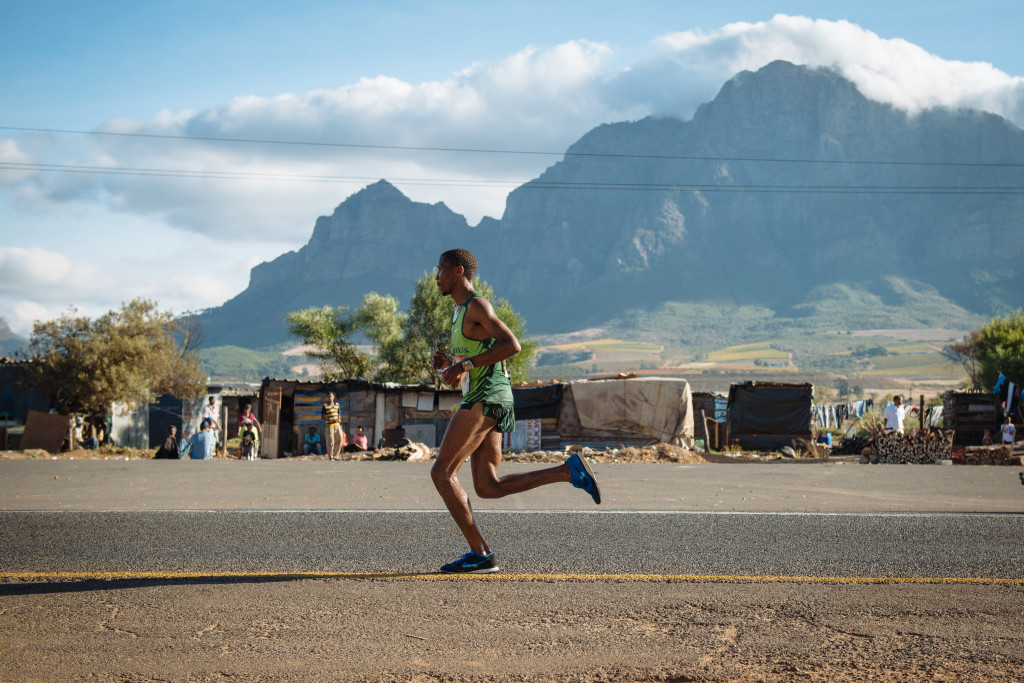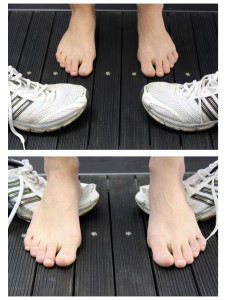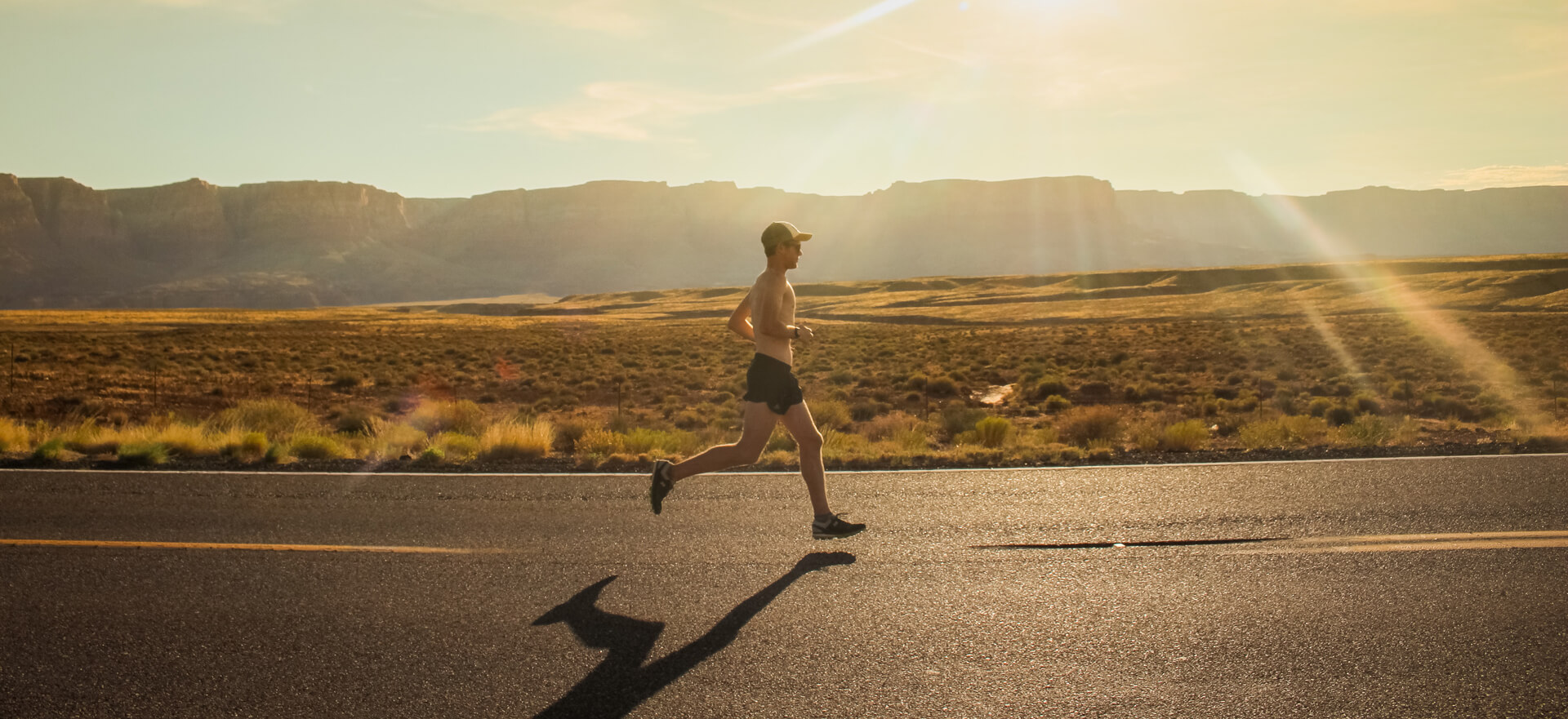
There are advantages to running in lighter, flatter shoes, but it’s a transition that takes time. StrideUK’s Mitchell Phillips makes the argument for and against going minimal.
Finally the light has switched on for many runners to trade in their heavy shoes in favour of a lighter, lower-profile alternative. Although I encourage runners not to wear heavily over-engineered running shoes if they don’t need them, it’s important to be aware of the consequences of such a change rather than jumping in with both feet!
Try this simple test:

Line yourself up behind your shoes and take a mental snapshot as to how you feel from the feet up. When completely settled in, place your heels on the forefoot section of the shoes and take a few minutes to feel the difference. This, I find, is the simplest way to get familiar with the anatomical changes that occur the minute we step into a typical pair of running shoes. Your heel instantly raises, your calves shorten, even your pelvis adjusts and drops forward.
Most shoes have a ‘ramp angle’. They feature a higher heel cushioned platform with a slope towards the forefoot. They were predominantly developed as a cushioning system for runners connecting with their heel first. Average heels sizes can span from 25mm to 35mm.

Over your running lifetime, your calves have become used to performing at a shortened length in relation to your running shoe. Any sudden change to a lower ramp angle shoe will force your calves to lengthen to a greater distance it has never performed at before. Times that by 1700 steps a mile, andcertainty of muscle reaction is inevitable – whether in the form of calf or Achilles tendon pain, or even a heel spur.
My advice, therefore, is simple: migrating to a lower profile running shoe must be done slowly. Always get checked out by an experienced unbiased professional rather than a 19-year-old, bulletproof club runner who works in a running shop! Run for no more than five minutes at a time, adding five minutes every other time you run. Always stretch after each run to help promote flexibility. Be extra cautious of such a dramatic change of footwear if you have a history of Achilles or calf pain.






